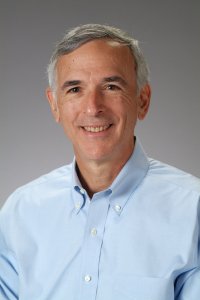
Magellan CEO Jim Lanard
Magellan Wind and Copenhagen Infrastructure Partners (CIP) have joined forces to embark upon an early-stage development portfolio of floating offshore wind projects off the California coast and other areas of the United States. Magellan will contribute knowledge of U.S. leasing, permitting, offtake, transmission, and interconnection, and CIP will provide project design, engineering, finance, construction, and operations.
“The offshore wind industry in the U.S., with its huge job-creation and economic-development potential, is poised for a rapid acceleration,” said Magellan CEO Jim Lanard. “We expect floating wind to be a significant contributor to this new-to-the-U.S. sustainable industry. We’re thrilled that we’ll be working with CIP to make the most of this exciting opportunity.”
Magellan plans to develop small- and large-scale offshore wind projects in deep coastal waters where floating foundations are required, said Magellan Chief Development Officer Jeff Kehne.
“We see Stiesdal Offshore Technologies’ TetraSpar floating foundation as the best-in-class technology and appreciate that CIP also sees its game-changing potential in the U.S.’s increasing price-competitive renewable-energy markets,” he said. “TetraSpar is constructed from factory-made components, available from existing, highly efficient plants that make land-based wind towers and nacelle parts. TetraSpar is also designed for deployment from a wide range of harbors using conventional tugboats, resulting in additional savings on vessels and port infrastructure.”
CIP is a fund-management company that currently has four funds and more than $8 billion under management. CIP’s collaboration with Magellan is its second U.S. offshore-wind initiative. The company co-owns (with Avangrid Renewables) Vineyard Wind, an offshore wind-development company that has been advanced as the winner of the Massachusetts tender for offshore wind-energy projects with its proposed 800-MW offshore wind farm located 15 miles south of Martha’s Vineyard.
Filed Under: Floating turbines, News, Offshore wind, Projects





The Conventional Radial bladed Wind Rotors become massive as the cube of the blade length, resulting in a 12 MW rated wind turbine, which is fall short of 50 MW rated unit, envisioned by the US DOE.
To achieve this goal, we suggest an Axial Flow Helical Bladed Rotor, as suggested in our US Patent: US 9,537,371 B2, Jan 3, 2017.
Since my retirement from Northrop Grumman, California, I am working on the design of an economical wind turbine, on-offshore/ offshore, utility scale, say in the range of 10 MW – ~50 MW/unit.
Please contact me, for details at ka@wtswind.com.
Thank you.
Best regards.
Dear Amy Stankiewicz,
I am a retired Aerospace Engineer, from Northrop Grumman, California. After my retirement, I am looking into generating; on shore as well as offshore wind power by economical means, US 9,537,371 B2, Jan 3, 2017.
I wish to collaborate with innovators like you, to bring the technology to use.